India goes to vote in seven phases this time
| Phases | States | Seats | Counting |
|---|---|---|---|
| 1 | 20 | 97 | Apr-11 |
| 2 | 12 | 95 | Apr-18 |
| 3 | 15 | 116 | Apr-23 |
| 4 | 9 | 71 | Apr-29 |
| 5 | 7 | 51 | May-6 |
| 6 | 7 | 59 | May-12 |
| 7 | 8 | 59 | May-19 |
Votes cast will be counted on May 23
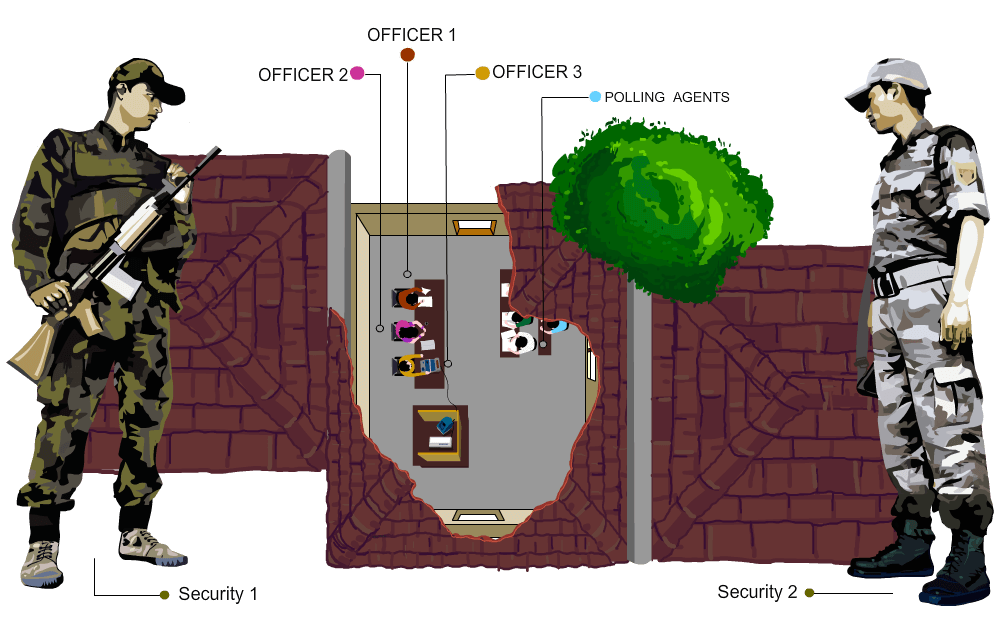
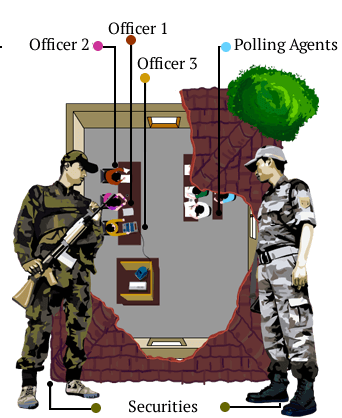

The first polling officer would vet your identification document against the voters' list.

Polling officer would then call out your name for the polling agents, assigned by each candidate, to hear. If any of the polling agents doubt your identity, he/she can challenge your vote by paying a certain sum of money. The agent's money would be forfeited if he is found to have challenged your vote without a valid reason.

If unchallenged, the second polling officer would smear indelible ink on your left index finger. You have to sign on the register or give your thumb impression. Then you would be given a voter's slip with a serial number.

You would proceed with the slip to the third polling officer, who holds the authority to get any bogus voter arrested. If the officer is convinced that the voter is genuine, he would press the ballot button on the polling control unit. If you hear a long beep sound, the machine is ready for you to vote. In a polling booth with minimal voters, the third polling officer will also act as the presiding officer. If a polling station has a large number of voters, there will be three polling officers and one presiding officer.
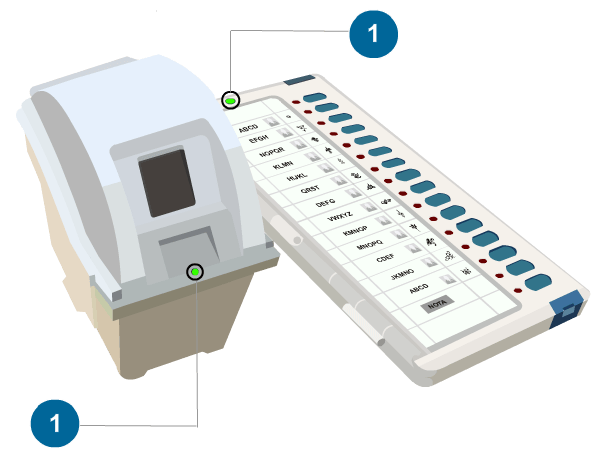
1. When you see a green light on the left side of the balloting unit, the unit is ready to use.

2. You can press the blue button against the name and symbol of your favourite candidate. You only have to press once.
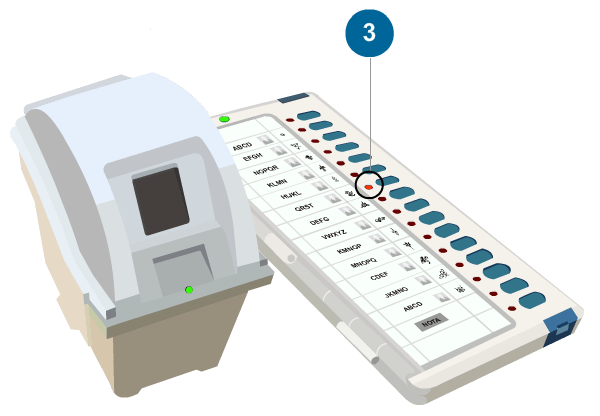
3. Once you have pressed the button, the green light will turn red with a beep sound. Your vote has been recorded. The machine is now locked, to prevent duplicate or invalid votes. The machine will be ready to vote only after the presiding officer presses the button on the control unit when the next voter is ready.
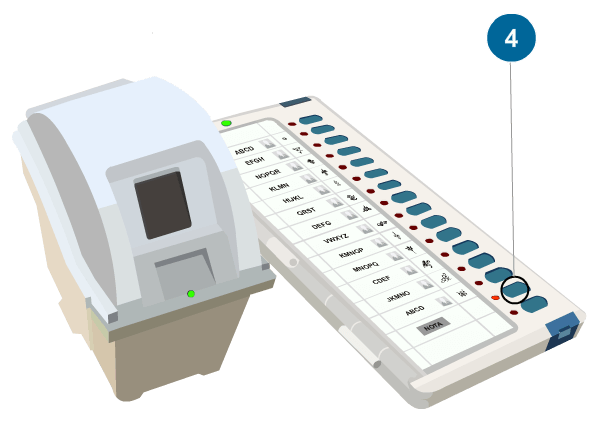
4. If you are not interested in any of the candidates listed, you can press NOTA (None of the Above). When you hear the long beep sound, it means voting has been completed. If you didn't hear the sound or the red light is not switched on, you can seek assistance from the presiding officer.
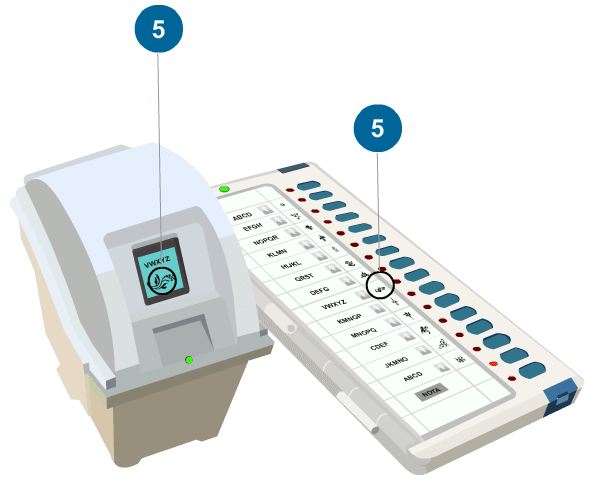
5. The election commission has introduced the VVPAT (voter-verifiable paper audit trail) for you to confirm if your vote has been cast against the intended candidate. Only you can see the paper audit. This is the first election where VVPAT machines are introduced countrywide.
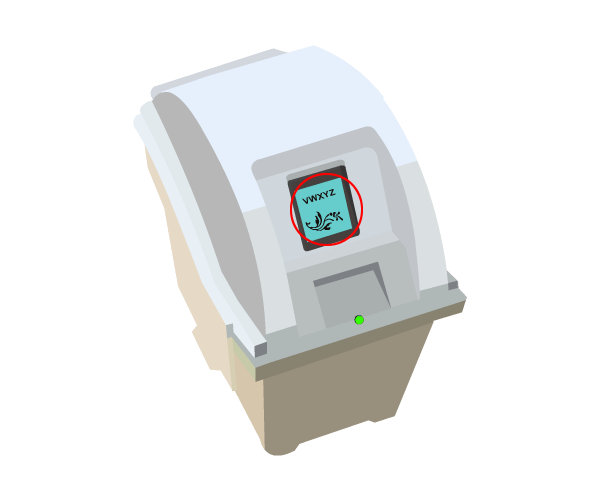
6. After you have voted, the VVPAT machine will produce a slip with the name, symbol and serial number of the candidate who received the vote. This slip will be covered by a glass, making it impossible for the voter or anyone else to take it out. The voter has seven seconds to read the slip, after which it will fall into the machine. In case of complaints regarding foul play, the box will be opened and the slips counted.

